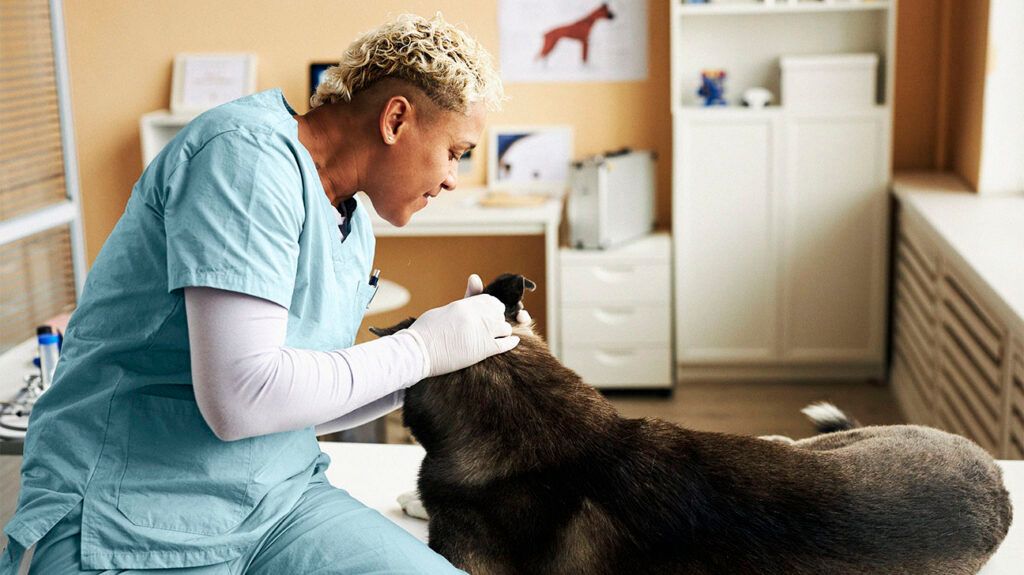Septicemic plague is a complication of pneumonic or bubonic plague and can also occur independently. It develops when bacteria that cause plague multiply in the blood.
The bacteria enter the bloodstream through flea bites or when a person handles an animal with an infection.
This article explores septicemic plague in more detail, including its symptoms, causes, and diagnosis. The article also discusses treatment and how to help prevent the transmission of septicemic plague.

The type of bacterium that causes plague is Yersinsia pestis. Septicemic plague is one of
Plague affects humans and nonhuman animals. Septicemic and bubonic plague symptoms develop after bacteria pass from a flea or other animal into a person’s body through a break in the skin, such as a cut, bite, or sore. Pneumonic plague spreads through droplets after a person with the condition sneezes or coughs.
Septicemic plague can develop independently or as a complication of other types of plague.
The bacteria can evade the immune system and multiply within macrophages, which are a type of immune cell. Typically, the bacteria multiply in the lymph nodes, which causes the characteristic lumps or buboes that develop with bubonic plague. Buboes are swollen lymph nodes.
If a person does not have buboes, the bacteria may have directly passed into their blood, causing septicemic plague.
Symptoms of septicemic plague may occur
When a person has septicemic plague, they may present with:
- chills
- fever
- abdominal pain
- extreme weakness or exhaustion
- bleeding, which typically occurs in the skin or organs
- shock
- gangrene, which is when skin and other tissues begin to die, particularly on the toes, fingers, and nose
When septicemic plague develops on its own, buboes are absent, but if it develops as a result of bubonic plague, a person may first develop buboes.
When anyone has septicemia league or any other type, they need to go to a hospital.
In the United States, plague is
- northern New Mexico
- southern Colorado
- northern Arizona
- southern Oregon
- California
- far western Nevada
Septicemic plague is a rarer form of plague and accounts for
Yersinia pestis is a gram-negative bacterium that causes plague, and its life cycle
Plague can spread from fleas, rodents, and other nonhuman animals to humans. Septicemic plague is often a complication of bubonic or pneumonic plague, but it can develop independently if Yersinia pestis passes directly into the blood.
Initial symptoms of the septicaemic plague make it difficult for a doctor to diagnose, as fever and chills are
However, if a person develops these symptoms in areas where rodents and other animals carry plague, a doctor
If a person has recently had a flea bite, telling the doctor about the bite could help eliminate other conditions. However, the only way to confirm plague is with a blood test, which screens for Yersinia pestis markers.
One key identifying symptom of bubonic plague is buboes. If a person develops septicemic plague as a complication of bubonic plague, a healthcare professional may identify the condition sooner.
If septicemic plague develops independently, a person would not have buboes, which may delay diagnosis.
Early administration of antibiotics is an
When a doctor diagnoses plague, a person must receive antibiotics as soon as possible due to the rapid progression of symptoms.
Aminoglycosides are
The earlier someone receives treatment, the
In the United States, particularly in the southwestern states, a person
If someone thinks they have received exposure to plague-causing bacteria or if they experience any symptoms of plague, they need to visit the emergency room immediately.
Septicemic plague occurs when plague-causing bacteria cause infection in the blood directly or as a complication of other types of plague.
Prompt treatment with antibiotics is necessary after infection, as symptoms can progress very quickly. People need to take precautions to avoid coming into contact with fleas and rats that may transmit plague.
A person needs to call 911 if they experience any symptoms of plague or think they may have received exposure to Yersinia pestis, the bacterium that causes plague.
